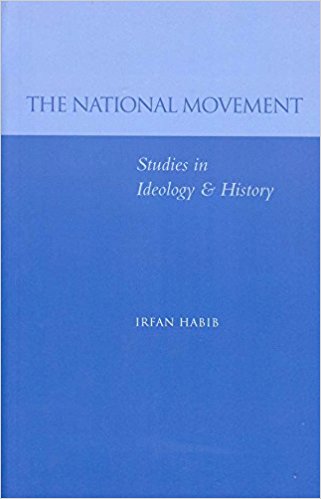The eminent historian Irfan Habib’s The National Movement: Studies in Ideology and History, seeks to grapple again with the classic question of the rela-tionship of socialist thought and nationalism. The first two of the five essays in the volume are centred on Gandhi, the third on Nehru, the fourth is a detailing of the 1930-1 Civil Disobedience Movement, and the last is on the Left and the National Movement. The first two essays together constitute a very abridged critical, but largely sympathetic intellectual biography of Gandhi, and the third essay does the same with Nehru. Habib writes with fluency, able to discriminate the shifts in the thoughts of these actors. For example, in relation to the relative priority of nationalism versus internationalism in Nehru’s case, or the use of state-enforcement of equality versus a more personally enacted ‘heart-based’ appeal in the case of Gandhi-he shows how reluctantly Gandhi acceded to state intervention. Moving away from personalities and their longer deve-lopmental trajectories, Habib demonstrates equal skill in showing the heterogenous colla-borating and competing compulsions and motivations of the single moment of 1930-1, the time of the Civil Disobedience Movement.
It is especially in the last essay (The Left and the National Movement) that one expects, based on the collection’s sub-title, the raising of broader questions of ideology, and the entailments of history-writing itself. It is in the context of this expectation of a theoretical enrichment of key socialistic concepts and self-reflections that one is likely to come away disappointed. For example, Habib informs us that the 1907 Stuttgart Congress of the Inter-national ‘only barely managed to delete from the resolution on the colonial problem a reference to the current civilizing colonial mission that would be taken over by the me-tropolitan socialist regimes after capitalism had been overthrown’. The task of an under-standing of ideology would be to theorize precisely this contingency-why would it be meaningful to liberate a people if everything they believed in was held to be merely false and superstitious and uncivilized? If little respect was given to the internal world of these perennially to-be-liberated peoples, what would (or could) be the nature of the ‘alliance’ that Lenin sought with these colonized people-this is even as we admit the force of the rigorous critique of ‘external/western’ capi-talism. Any alliance could hardly be equal, or hold the context for any deeper relation beyond mere tactic. The ‘Asian people’ were mere numbers and quantity (internally undifferentiated within that wide continent as they existed primarily as mere aggregate), whereas the privilege of self-consciousness was only granted to the European working-class. Hence Lenin’s statement: ‘class-conscious workers of Europe now have Asiatic comrades and their number will grow by leaps and bounds’. Habib’s essay helps us discern the problem even as he does not attempt to theorize it-the essay does little to tame the difficult beast of trying to articulate the precise relation of European and Asian peoples (the hierarchies, the internal content, the forms of communicative reason involved), and here he is no better than Lenin, who will later speak with equal vagueness of the ‘possible corre-lations between the bourgeois liberation move-ment of the oppressed nations and the prole-tarian emancipation movement of the opp-ressed nation’. The category of the correlate remains opaque. Habib does not linger on these difficulties and would rather move on to the case of China. The more concrete diffi-culty is the fact that the majority in India are peasants-not that the problem of the rural is solved at all in Russia. The later Comintern diktat of ‘unfolding the agrarian revolution’ betrays only the weakness of lumping a collec-tion of moral oughts’ without seeking out the relation between these norms, idealizations and injunctives.

